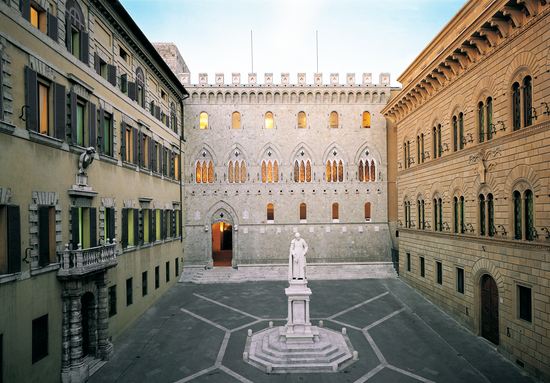Discovery of the New World in 1492 required the persistence of an explorer with vision, ability and good financing. Christopher Columbus had spent many hours in the library of his deceased father-in-law in Madeira, where he consumed whatever knowledge of the known world that he could find. This helped him to formulate his vision of exploration. Through his marriage to Filipa Moniz Perestrelo, who was a noblewoman from Madeira, Portugal, he had the ability to use his social position to further his quest. From the age of fourteen, Columbus had sailed the merchant sea routes of the Genoese, gaining the skills of a seaman and the cartography ability necessary to captain a ship in unchartered seas. To attain his goals of navigating the Atlantic Ocean, Columbus only lacked a sponsor and financing.
To set up an expedition, a type of private enterprise-government partnership was necessary. Only monarchs could sanction an expedition in search of new trade routes (and new lands) in the name of their kingdom. Defending the lands discovered, populating a new colony and granting commercial rights could only be performed by a Royal Crown. Columbus was persistent in his proposal to the monarchs of Spain, but without bankers in his corner his venture could not have sailed beyond the Canary Islands.
Contrary to popular belief, Queen Isabella of Spain did not pawn her jewels to finance the Columbus voyages to the New World, although the jewels had been pledged years earlier during the conflict to expel all non-Catholics from Spain. When the royal couple was ready to entertain the Columbus proposal, they were interested in locating a new route to markets in India, conquering new lands and finding sources of gold. However, following the years of conflict to unite their country they were somewhat strapped for cash. The crown would authorize an expedition of three small ships, but the King and Queen did not advance the costs of the voyage. The discovery of the New World was financed in much the same way as major exploration and discovery is financed today, through taxation of the public and bank financing. The royal couple sought loans to the crown and investors willing to speculate. The loans were secured by expected future wealth that would be generated from the trade routes established. Interest and interim payments on the loans came from taxes.
By the 15th century, a system of financing by governments using bank loans was well in place. A favorite bank of royals throughout Europe was the Genoese Bank of St. George. The bank began in 1407 and was in business until it was closed by Napoleon in 1805. In 1444, the bank was chartered in Genoa to make government loans. Bank of St. George director Benedetto Centurione, chaired the panel on international finance from 1445 to 1447, the final report of which recommended that European trading partners adopt a gold standard. The model developed by Centurione and the Bank of St. George established international finance standards for the next 500 years.
The House of Centurione was an investment and financing giant, based in Genoa, with branch offices in Tunis, Chios, Bristol, Seville and Lisbon. The firm’s representative in Lisbon was Paolo Centurione, who had hired a twenty-five year old Christopher Columbus to arrange sugar purchases in Madeira. Columbus by that age was well aware of the power and influence of the family. As a young teenager, Columbus sailed from Genoa to Chios, where Centurione held warehouses for goods that would then be sold throughout the eastern Mediterranean. It was the Seville branch of the family firm who financed the third voyage of discovery for Columbus and the Bank of St. George handled the Columbus family finances well into the sixteenth century.
The Centurione family is not as familiar a name as the Medici’s of Florence. One reason that Amerigo Vespucci was able to upstage Columbus in giving his name to the new continent was that Vespucci was an employee of the Medici and the Florence contingent was in competition with Genoa.
When the Ottoman Turks came from the east to control Constantinople in 1453, they disrupted the commodities markets of Genoa and threatened assets of the Bank of St. George. The bank directors turned their attention to the possibility of a route to India by sailing west across the unchartered Atlantic. The Spanish royals gave Columbus a vote of confidence and the Bank of St. George eventually financed the voyages of Columbus that opened the Atlantic to trade.
The Columbus gamble became a Centurione selling point. In 1527, the Centurione agent in Bristol, England, Robert Thorne, obtained a promise from the English king to join the firm in supporting a passage to the East by sailing to the West. Venetian John Cabot (Giovanni Caboto) was commissioned to sail to North America for England and in 1497, became the first European to set foot on the continent since visits by the Norse in the 11th century. Later, his son, Sebastian Cabot, led commercial expeditions to the New World under the flags of England and later Spain.





